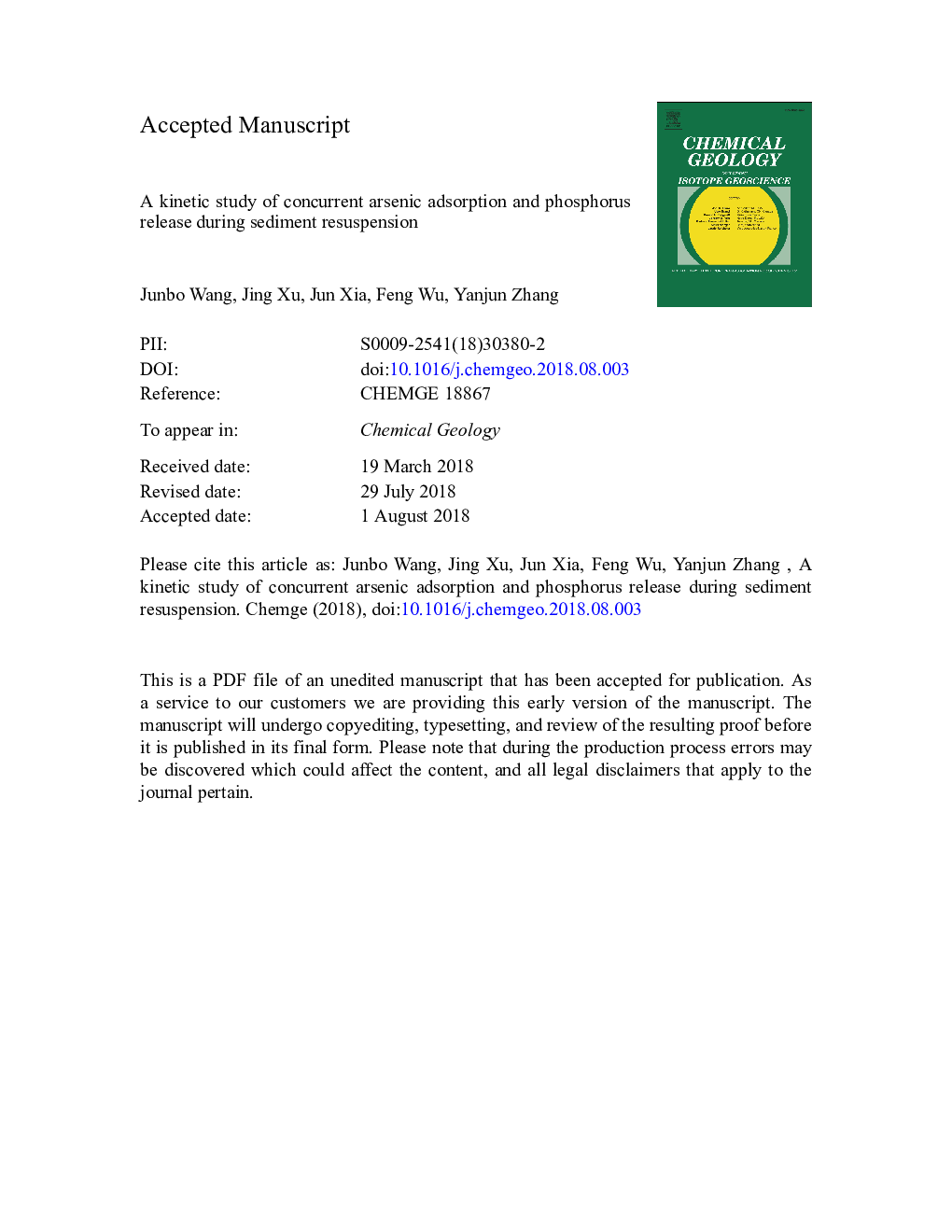| Article ID | Journal | Published Year | Pages | File Type |
|---|---|---|---|---|
| 8953161 | Chemical Geology | 2018 | 31 Pages |
Abstract
Combined phosphorus and arsenic pollution creates the possibility of interactive adsorption/desorption behavior due to the similar chemical structures of these two elements. The presence of arsenic species in overlying water can therefore affect phosphorus release during sediment resuspension, and vice versa. In this work, the adsorption kinetics of As(III) and As(V) on natural sediments during sediment resuspension were studied, as well as the release kinetics of phosphorus. Several environmental factors such as stirring rates, pH, and initial arsenic concentrations on arsenic sorption and phosphorus release were investigated. Results showed significant correlation between arsenic sorption amount and total phosphorus (TP) release (R2â¯=â¯0.9661 for As(III) and TP; R2â¯=â¯0.8336 for As(V) and TP). It was also shown that a higher sorption amount of either As(III) or As(V) led to a higher phosphorus release and that this effect was more pronounced for As(V) systems in both As(V) adsorption and TP release. Under phosphorus release-affected conditions, the As(III) and As(V) isotherms were well fitted by the Langmuir model (R2â¯=â¯0.9363 for As(III) and TP; R2â¯=â¯0.9251 for As(V) and TP). Acid and basic pH favors TP release and inhibits As(III) adsorption, whereas higher pH led to a decrease in As(V) adsorption. A higher stirring rate led to higher TP release, but its effect on arsenic adsorption was more complex. Arsenic adsorption kinetics all were well fitted by a pseudo-second-order model, but extreme pH conditions led to a different pattern for phosphorus release kinetics. These findings have significant implications for assessment and prediction of contaminant transportation in arsenic/phosphorus multicomponent contaminated systems.
Related Topics
Physical Sciences and Engineering
Earth and Planetary Sciences
Geochemistry and Petrology
Authors
Junbo Wang, Jing Xu, Jun Xia, Feng Wu, Yanjun Zhang,
